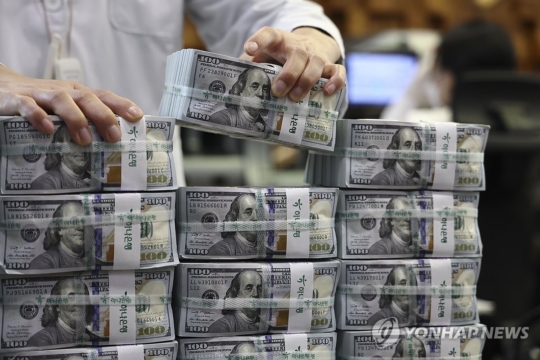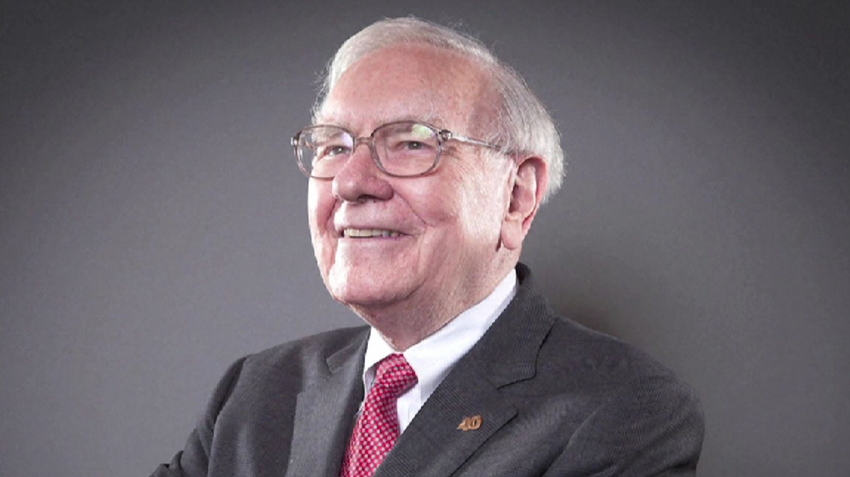- 1450원까지 치솟은 환율…'달러→원' 환전 급증
- 비상계엄 사태 이후 이번달 원/달러 환율이 치솟자 개인 고객이 주요 은행에서 미국 달러화를 원화로 환전한 액수가 크게 늘어난 것으로 나타났다. 달러화를 보유해온 개인 투자자들이 대거 차익 실현에 나선 것으로 분석된다
![USD/KRW Exchange Rate and the Long-Term Peak Theory of the US Stock Market [feat. EcoPro Share Price Chart]](https://cdn.durumis.com/image/bs8k2meo-1ifutuscb?width=660)
.
The rise in the won-dollar exchange rate is frightening. Yesterday, Christmas Eve, the 1450 won resistance level, which seemed to be holding for the past few days, quietly and subtly broke through slightly before closing.
Was it because the Bank of Korea was closed for Christmas Eve, a holiday, and it was slightly breached for a day? Or did they decide to give up on defending this line because continuing to do so would only deplete foreign exchange reserves and benefit foreigners who are withdrawing? I'm not sure.
If it's the former, then it seems likely to push back down towards the end of the week, Thursday and Friday, after the Christmas holiday. But we'll see after that...
![USD/KRW Exchange Rate and the Long-Term Peak Theory of the US Stock Market [feat. EcoPro Share Price Chart]](https://cdn.durumis.com/image/soj2q4rf-1ifutvuqu?width=660)
USD/KRW Exchange Rate Daily Chart
This recent trend in the won-dollar exchange rate seems to confirm what Vice Minister of Economy Choi Sang-mok said: ‘half due to domestic circumstances, and half due to external factors (global dollar strengthening).’
However, I suspect that the timing of the exchange rate rise attempting to break through 1450 won was slightly accelerated due to the worsening domestic economy and the additional uncertainty that emerged after the state of emergency.
When you search for news related to the won-dollar exchange rate over the past 2-3 days, the most frequent news is as follows: There's a surge in the number of individuals and corporations exchanging ‘dollars to won’ from their dollar accounts. From the perspective of those who had held foreign currency in dollars, this can be seen as ‘profit-taking’.
The problem is that despite the recent surge in the demand for won from individuals exchanging dollars to won, the upward trend in the exchange rate is not easily slowing down.
So, should the recent phenomenon of a sharp increase in the exchange of dollars to won be seen as a sign that the won-dollar exchange rate will be difficult to rise further?
Of course, I don't see it that way. Since the latter half of 2021, I've been talking about the ‘long-term strength of the dollar until the late 2020s,’ so my thought is ‘it's still a long way off.’ I’ve occasionally mentioned roughly how far I’m looking ahead.
Of course, nowadays, it's just the armchair speculation of an ordinary citizen who has no influence on the market, but since the exchange rate has experienced a shock after the state of emergency and the upward pressure continues, I'm trying to avoid talking about the possibility of further exchange rate increases as much as possible.
Below is the trend of the won-dollar exchange rate chart based on the monthly closing price.
The fact that this resistance level near 1450 won was slightly exceeded yesterday is a bit startling in the daily chart's trend, but the important thing is the trend of the ‘monthly closing price.’ It is still too early to say whether it has broken through, and the closing price of this month should be considered important for now.
Since 2022, I see the current situation as a very important turning point for exchange rates and markets (both domestic and international).
![USD/KRW Exchange Rate and the Long-Term Peak Theory of the US Stock Market [feat. EcoPro Share Price Chart]](https://cdn.durumis.com/image/upt89ruo-1ifuu19f5?width=660)
USD/KRW Exchange Rate Monthly Chart
However, in a recent post, I briefly included the dollar index chart and mentioned that it’s ‘not good.’
While the surge in the exchange of dollars to won suggests that individuals perceive this as the peak of the won-dollar exchange rate, the recent trend of the dollar index below shows that it has ‘just broken through short-term and medium-term resistance levels.’
Looking at the won-dollar trend along with this, even if further increases are blocked around 1450 won, it's a situation where it’s ‘difficult to fall significantly due to the global strong dollar.’
![USD/KRW Exchange Rate and the Long-Term Peak Theory of the US Stock Market [feat. EcoPro Share Price Chart]](https://cdn.durumis.com/image/do1eqouv-1ifuu23af?width=660)
Dollar Index Daily Chart
It is fortunate that, looking at the EUR/USD exchange rate, which is the most weighted in the basket instead of the dollar index, it is being maintained below the short-term previous high and the medium-term previous high (horizontal trend line) of 0.9665 level.
However, if this also rises, it should be considered somewhat serious.
Yesterday, on YouTube, an expert on an economic broadcast said, ‘Whether it's 1450 won or slightly higher at 1500 won, will there be much of a difference?’ Will there be? In my opinion, ‘it makes a big difference.’
![USD/KRW Exchange Rate and the Long-Term Peak Theory of the US Stock Market [feat. EcoPro Share Price Chart]](https://cdn.durumis.com/image/h9ddotab-1ifuu2qfa?width=660)
Euro/Dollar Daily Chart
Previously, I made this rough guess.
'Around the time the won-dollar exchange rate (in terms of monthly closing price) breaks through the resistance level near 1450 won, it seems like the US stock market will also reach its long-term peak,’ blah blah…
It’s the point when large waves will begin to hit global stock markets, including the US. And the expectation is that these waves will become progressively larger as time goes on, continuing into the latter half of the 2020s.
![USD/KRW Exchange Rate and the Long-Term Peak Theory of the US Stock Market [feat. EcoPro Share Price Chart]](https://cdn.durumis.com/image/o6clms7b-1ifuu423j?width=660)
S&P 500 Index Daily Chart
Meanwhile, below is the stock price chart of Ecopro that I briefly saw while passing by.
After the high point in mid-2023, the daily chart shows that the support levels that seemed to provide meaningful support are only providing temporary rebounds before gradually breaking away again.
![USD/KRW Exchange Rate and the Long-Term Peak Theory of the US Stock Market [feat. EcoPro Share Price Chart]](https://cdn.durumis.com/image/nlf5ru10-1ifuu4ola?width=660)
EcoPro Share Price Daily Chart
It is still a bit early to judge that it has completely broken away, as it has only slightly broken away on the daily chart. However, if it continues to fall, it could be in a position to travel a long way again, so those who hold stocks related to secondary battery materials should be cautious.
If it breaks away from here, there don't seem to be any meaningful strong support lines until the point indicated on the weekly chart below. Therefore, it seems that those holding Ecopro and secondary battery-related stocks should not be complacent just because they have fallen a lot compared to their peak, and need to be careful about the trend…
![USD/KRW Exchange Rate and the Long-Term Peak Theory of the US Stock Market [feat. EcoPro Share Price Chart]](https://cdn.durumis.com/image/uaka5g5a-1ifuu5dor?width=660)
EcoPro Share Price Weekly Chart
And it will be necessary to continue monitoring the movements of Buffett and Berkshire…

